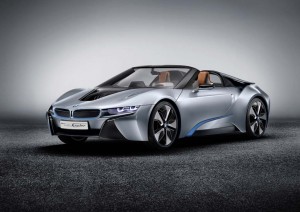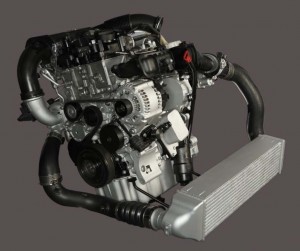We hear the word, “downsizing” a lot these days, and there’s no question that more and more Americans are abandoning their full-size utes, pickups and sedans for smaller offerings.
But the shift is happening at a far slower pace than many had anticipated – and for a good reason. Motorists have discovered that instead of having to settle for vehicles smaller than they might feel comfortable in they can instead downsize their powertrains, trading in a V-8 for a V-6, for example, or a six for a higher-mileage four. And now comes an entirely new generation of three-cylinder powertrains.
As we recently discovered during a morning drive at BMW’s suburban New Jersey headquarters, these are not the stone pony inline-three engines from decades past. In fact, the prototype BMW 1-Series we tested might have completely fooled us into thinking it was “just” another BMW I-6, peppy, smooth and satisfyingly responsive when we put the proverbial pedal to the metal.
“Most drivers probably won’t even notice,” boasted Heidelinde Holzer, the powertrain manager overseeing development of BMW’s turbocharged 1.5-liter I-3, as we pulled away from BMW’s sprawling campus in the New York suburb of Woodcliff Lake.
To test her optimism we gave the 1-Series “mule” full throttle. With only the most brief hint of turbo-lag, the little sedan launched into motion. We noticed none of the classic shake associated with 3-cylinder powertrains – the result of a sophisticated computer control algorithm and direct injection as well as a balance shaft, Holzer explained.
As we long ago discovered, performance isn’t solely about 0 to 60 times. And the prototype engine delivered the sort of resonantly satisfying exhaust note we typically associate with a BMW six.
In its current configuration, BMW is getting about 177 horsepower out of the engine – an impressive 118 horsepower per liter. And the first planned production application is expected to nudge output up to 220 horsepower, or 147 hp/liter, which is up there with some of the market’s highest-performance powertrains.
At the same time, with less mass and fewer moving parts, BMW estimates it will get anywhere from 5% to 15% better fuel economy out of the I-3 compared to a four-cylinder making similar power.
Expect to see the new engine make its formal debut a year from now in the BMW i8, a sporty plug-in hybrid that will be one of two new models in a green brand-within-a-brand. (The other is the all-electric BMW i3.)
We’re all but certain to see the new three-cylinder show up in other applications, company sources hint. The downsized engine would find a ready market in Europe, most likely in the new 1-Series and perhaps even in a BMW 3-Series, though it remains to be seen if it will also power those models in the States.
BMW will initially produce the little three in Germany and may add production in China, which also gives a hint as to its future plans.
Holzer also noted it is part of a “family” of engines that could be produced in various displacements and in three- and four-cylinder configurations.
The Bavarian maker is by no means alone in its interest in three-cylinder layouts. Ford has a version of its own for the little Fiesta model, and Mitsubishi showed off a new I-3 at the recent New York Auto Show. And General Motors could soon swap out the four-cylinder powertrain in the Chevrolet Volt for a smaller, more fuel-efficient three.
Those who recall the downsized powertrains offered by the industry in the past will clearly be in for a surprise when they check out the new generation of three-cylinder offerings.



BMW would be lucky to get 5% better mpg from the I-3 over an I-4 IME. The I-4 would be better in all respects from drivability to mpg to power output, to smoothness, to reduced turbo lag, etc. but it would cost slightly more than the I-3. I think BMW will regret this I-3 unless they intend to sell it to people who have no clue about engine drivability and are only interested in ~5% better mpg.
Since the vast majority of BMW’s in our Italian ‘hometown’ are 1-series 5-dr. hatches (nicer looking IMO than the X-1) with diesels about this size, I don’t see them being a game-changer there. But here, they well may be. My mom-in-law’s 3 cyl 800cc Chevrolet Matiz can do the 83mph autostrada speed limit over there, if not with ease, and with 50+mpg CAFE facing us, I’m sure automakers will give us a new set of the ‘facts of life’ soon.